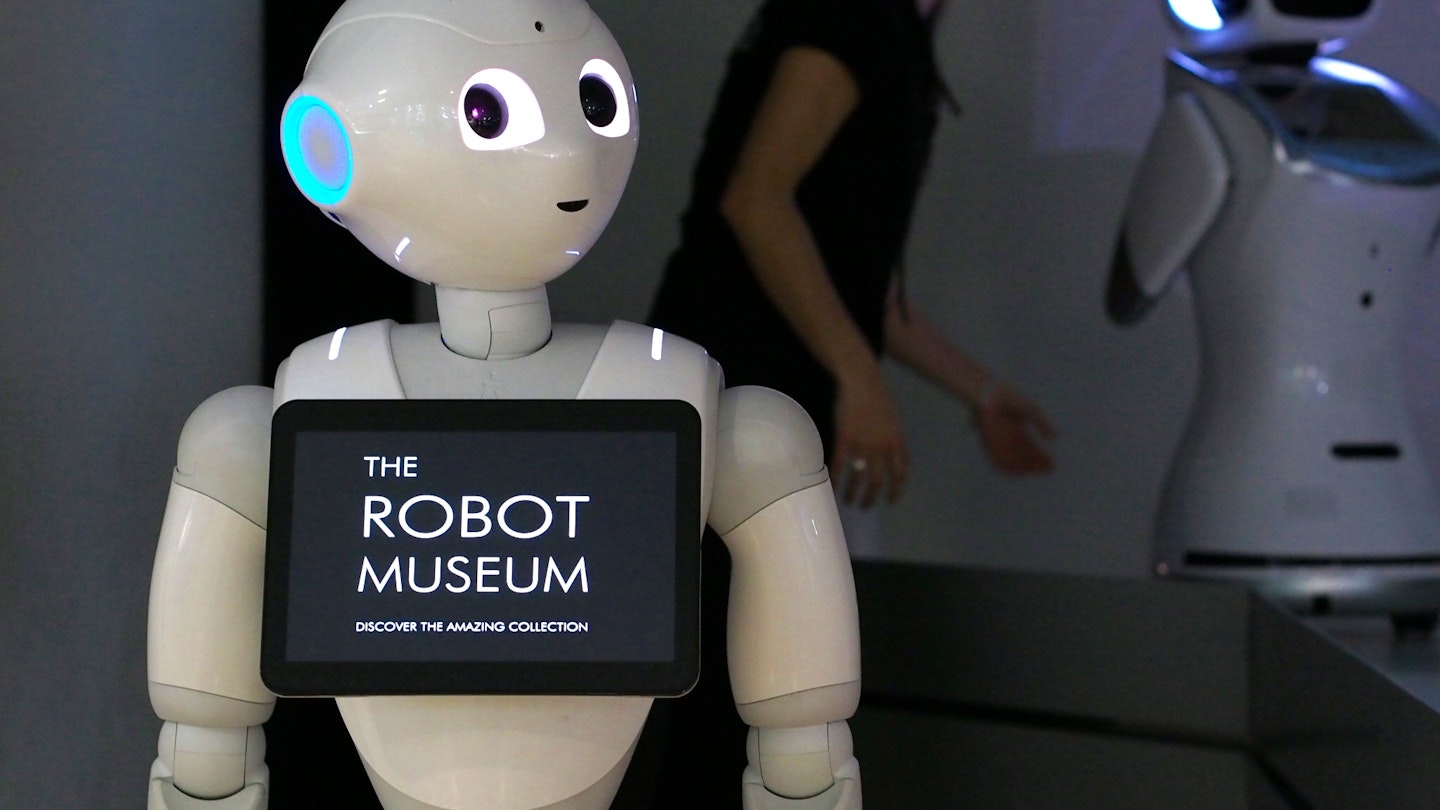Madrid has a stellar selection of museums, but don’t stop at the big names. Hidden behind terracotta-topped walls and tucked away below the city’s streets are fascinating, lesser-known museums waiting to be discovered. From subterranean ghost stations to historical mansions with sun-soaked courtyards, here are Madrid’s best museums that you haven’t been to.
1. The Robot Museum
Tucked away in the basement of games shop Juguetrónica, this subterranean den is a treasure trove of technology. It’s led by two guides: one friendly human and one humanoid robot called Pepper – the world’s first robot to recognize faces and human emotions. After a short video about the history of robots, explore the collection which includes one of the biggest selections of robotic dogs in Europe, a 2005 Nao model, and replicas of famous androids.
2. Museo de Anatomia
Firstly, don’t trust any opening times on the internet; this museum’s door is locked unless you confirm an appointment. Hidden in the Faculty of Medicine at Complutense University of Madrid, the Museo de Anatomia displays a vast collection of human bones, mummified body parts, and intricate wax sculptures. The permanent collection features malformed baby skeletons, a 300-year-old dissection table, and a wax replica of a man with two penises. Although it’s difficult to get in, it’s certainly worth the effort.
3. Museo del Romanticismo
This ornate museum offers a peek into the opulent life of Madrid’s bourgeoisie during the Romantic period. Inside this 18th-century mansion, find the ballroom lined with a grand piano, gilded frames, and flashy antiques. Explore intimate belongings, such as the 19th-century toiletries of Fernando VII. Conclude your visit with a coffee or a beer in the beautiful cafe, featuring original French doors that open onto a lush garden and water fountain.
4. Imprenta Municipal – Artes del Libro
Inside one of the last examples of 1930s functionalist architecture in Madrid, you’ll find a fascinating homage to graphic design. This collection spans machinery, typography, and bookbinding, along with changing exhibitions on the upper floors. The permanent collection features manual printing presses from the 16th century to the 1920s, appealing to typography enthusiasts. Entry is free, and guided tours are available at no cost.
5. Museo Sorolla
No one captures the Spanish sunshine quite like Valencian painter Joaquín Sorolla. After moving to Madrid with his family in 1890, he created some of his best works in their family home. The house is a Mediterranean oasis in the city, featuring a relaxing courtyard, an impressive collection of artwork, and a remarkably-preserved studio complete with the artist’s paintbrushes still in place.
6. Anden Cero
Visit the ghost metro stop of Estación de Chamberí, a perfectly-preserved relic below the bustling streets of modern Madrid. Designed by architect Antonio Palacios, this station was part of the city’s original network built in 1919 but was abandoned due to a change in development plans. Visitors can descend stone steps into a station lined with original, brilliantly-colored adverts, perfectly preserved ticket offices, and old metro maps. Entry is free, though queues can form during peak times.
7. House-Museum of Lope de Vega
Revered Spanish poet and playwright Lope de Vega bought this house back in 1610, allowing people to explore his place of work and refuge with a free guided tour. Groups never exceed 15, maintaining the building’s peace and tranquillity. Visitors can see original books, the writer’s desk, and examine the bedrooms before relaxing in the charming courtyard. Tours last 45 minutes and are available in English and Spanish.
8. Museo Nacional de Artes Decorativas
Located in the center of Madrid, the Museo Nacional de Artes Decorativas is a lesser-known gem packed with historical design housed within a four-storey 19th-century mansion. The permanent collection showcases 16th and 17th-century objects, complemented by some cleverly-placed modern pieces, such as photography by contemporary feminist artist Laura Torrado in the kitchen. Visitors can also find contemporary exhibitions on the first and fourth floors.




